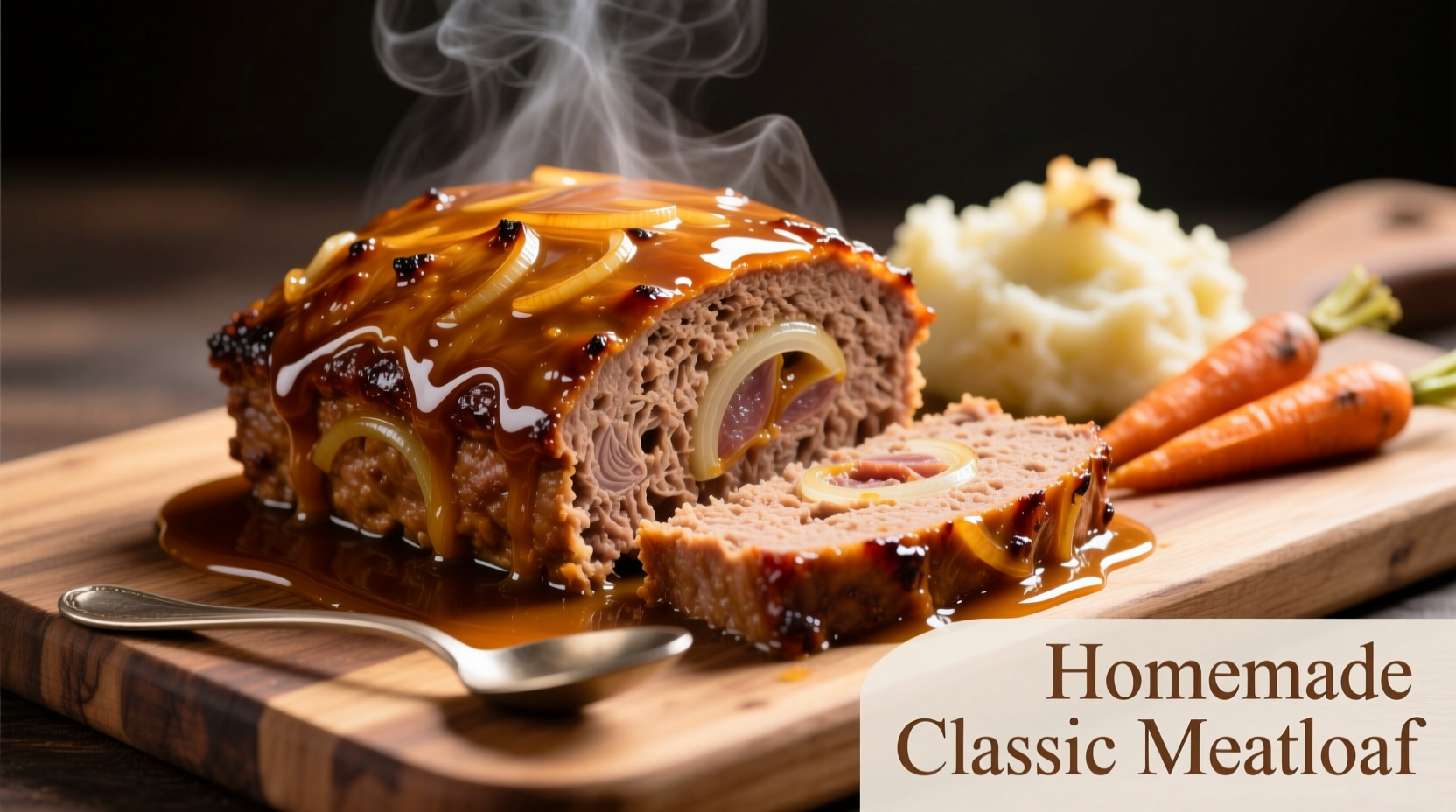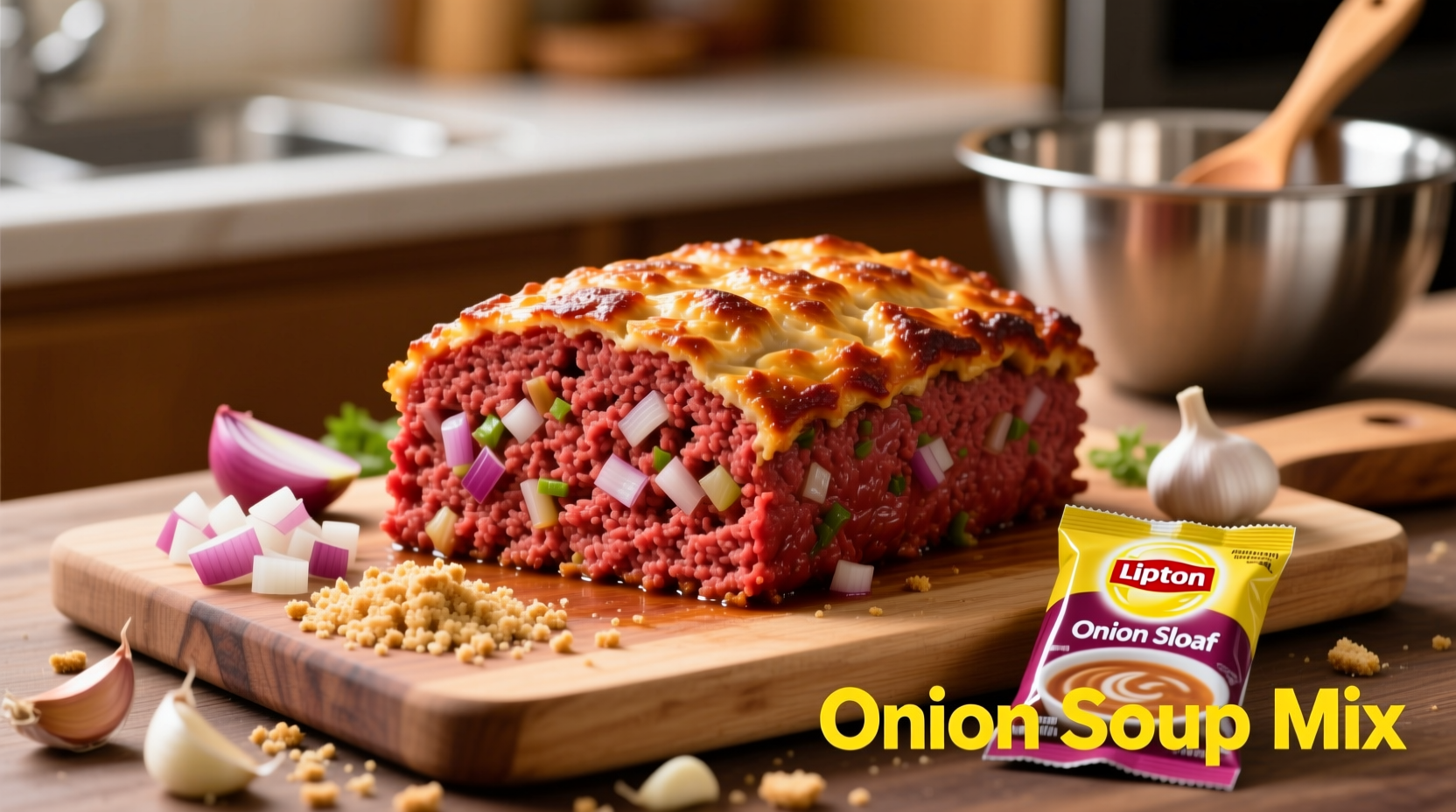For decades, home cooks have relied on Lipton onion soup mix as the secret weapon for perfect meatloaf. This simple addition solves two common meatloaf problems: bland flavor and dry texture. The mix's concentrated onion powder, beef stock granules, and savory seasonings penetrate the meat mixture evenly, creating complex flavors that develop during baking without requiring hours of preparation.
Why This Mix Works So Well
The magic happens through three key mechanisms. First, the dehydrated onions rehydrate during cooking, releasing natural sugars that caramelize on the meat's surface. Second, the beef bouillon provides glutamates that enhance umami perception. Third, the mix's fine texture distributes seasoning more evenly than fresh onions, which can create wet spots in the mixture.
| Component | Function in Meatloaf | Chemical Contribution |
|---|---|---|
| Dehydrated Onions | Moisture retention, sweetness | Sulfur compounds, fructose |
| Beef Bouillon | Umami foundation | Glutamates, inosinates |
| Maltodextrin | Browning agent | Maillard reaction catalyst |
Perfect Meatloaf Formula
Follow this professional-tested ratio for guaranteed success:
- 1.5-2 pounds ground beef (80/20 fat ratio)
- 1 packet Lipton onion soup mix (1.1 oz)
- ⅔ cup milk or broth
- 1 large egg
- ¾ cup breadcrumbs
- 1 tablespoon Worcestershire sauce
Mix ingredients gently with your hands for no more than 90 seconds. Overmixing develops proteins that make meatloaf tough. Shape into a loaf on a parchment-lined baking sheet rather than in a pan - this allows air circulation for even cooking and prevents steaming.

Avoid These Common Mistakes
Many home cooks sabotage their meatloaf with these errors:
- Using lean meat - Fat content below 15% guarantees dry results
- Adding fresh onions - Creates moisture pockets that steam rather than brown
- Overbaking - USDA recommends 160°F internal temperature, not 180°F
- Skipping the rest period - Let meatloaf rest 10 minutes before slicing
Historical Context and Evolution
Lipton's onion soup mix revolutionized American home cooking when it launched in 1954. Originally marketed as a standalone soup, resourceful cooks discovered its versatility as a seasoning blend. By the 1970s, it had become the cornerstone of "convenience cuisine" - a movement documented by the National Council for History Education as transforming weeknight cooking. The mix's popularity for meatloaf specifically grew through community cookbooks and church recipe exchanges, becoming a cultural staple by the 1980s.
Flavor Variations Worth Trying
While the classic version remains beloved, these professional-tested variations add exciting dimensions:
- Smoky Southwest - Add 1 teaspoon chipotle powder and ½ cup corn
- Italian Herb - Mix in 2 tablespoons pesto and substitute Parmesan breadcrumbs
- Asian Fusion - Replace Worcestershire with hoisin and add 1 tablespoon ginger
Storage and Reheating Science
Proper storage maintains texture and safety. Cool meatloaf to 70°F within 2 hours (per USDA Food Safety guidelines), then refrigerate in airtight containers for up to 4 days. When reheating, add 2 tablespoons broth per slice and cover with foil to prevent moisture loss. The ideal reheating temperature is 325°F for 20-25 minutes - high enough to kill bacteria but low enough to prevent further protein denaturation that causes dryness.











 浙公网安备
33010002000092号
浙公网安备
33010002000092号 浙B2-20120091-4
浙B2-20120091-4